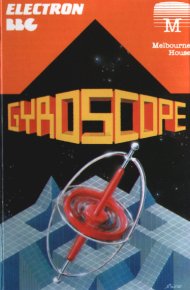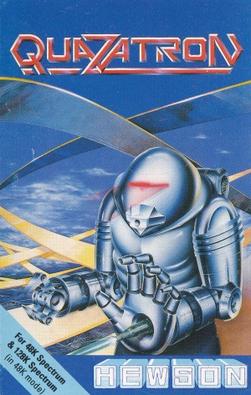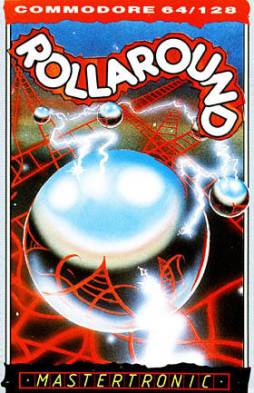
Alien 8 is an action-adventure video game developed and published by Ultimate Play the Game. It was released for the ZX Spectrum, BBC Micro, Amstrad CPC and MSX in 1985. The game is a spiritual successor to the best-selling Knight Lore, which was lauded by critics for its isometric graphics. In the game, the player takes control of a robot, Alien 8, whose job is to ensure that all of the cryogenically frozen passengers on board a starship remain viable during the ship's voyage.

Knight Lore is a 1984 action-adventure game developed and published by Ultimate Play the Game, and written by company founders Chris and Tim Stamper. The game is known for its use of isometric graphics, which it further popularized in video games. In Knight Lore, the player character Sabreman has forty days to collect objects throughout a castle and brew a cure to his werewolf curse. Each castle room is depicted in monochrome on its own screen and consists of blocks to climb, obstacles to avoid, and puzzles to solve.

Pentagram is a ZX Spectrum and MSX video game released by Ultimate Play the Game in 1986. It is the fourth in the Sabreman series, following on from his adventures in Sabre Wulf, Underwurlde and Knight Lore. Similarly to Knight Lore it uses the isometric Filmation engine. The game was written by either Tim and Chris Stamper or a U.S. Gold programming team.

Gunfright is an action-adventure game developed by Ultimate Play the Game and published by U.S. Gold. It was first released for the ZX Spectrum in December 1985, then released for Amstrad CPC and the MSX the following year. The player takes the role of a sheriff in the town of Black Rock and is tasked with eliminating outlaws who are scattered throughout the settlement.
Vortex Software was a video game developer founded by Costa Panayi and Paul Canter in the early 1980s to sell the game Cosmos which Panayi had developed for the Sinclair ZX81. They converted the game to the ZX Spectrum, but due to the low sales of the ZX81 version they licensed the game to Abbex.

Tornado Low Level is a multidirectional flight game developed by Costa Panayi and published in 1984 by the company he co-founded, Vortex Software. The game was first released for the ZX Spectrum, and later ported to the Amstrad CPC and Commodore 64.

Spindizzy is an isometric video game released for several 8-bit home computers in 1986 by Electric Dreams Software. It combines action and puzzle video game elements. Players must navigate a series of screens to explore a landscape suspended in a three-dimensional space. Development was headed by Paul Shirley, who drew inspiration from Ultimate Play the Game games that feature an isometric projection.

Gyroscope is an action video game published by Melbourne House in 1985 for the Acorn Electron, Amstrad CPC, BBC Micro, Commodore 64, and ZX Spectrum. It is based on the Atari Games arcade title Marble Madness. Melbourne House would go on to publish the official ports of Marble Madness for the ZX Spectrum and Amstrad CPC, but these were not based on Gyrosope.

Highway Encounter is a video game published for the ZX Spectrum, Amstrad CPC, MSX, Commodore 64, Sharp MZ, and Tatung Einstein by Vortex Software in 1985. It was written by Costa Panayi who also coded Android, Android Two, TLL, Cyclone, and Revolution.
Costa Panayi is a former computer game programmer active during the 1980s. He founded Vortex Software with Paul Canter, publishing games for the ZX Spectrum, Commodore 64 and Amstrad CPC.

Android Two is a shoot 'em up maze video game written by Costa Panayi and published by Vortex Software in 1983 for the ZX Spectrum and in 1985 for the Amstrad CPC. It is the sequel to Android One: The Reactor Run, released earlier in 1983.

Quazatron is an action game developed by Graftgold, and released in 1986 by Hewson Consultants. It was designed by Steve Turner for the ZX Spectrum.

Deflektor is a puzzle video game developed by Vortex Software and published by Gremlin Graphics in December 1987. The game was followed by a sequel in 1989 called Mindbender.

Isometric video game graphics are graphics employed in video games and pixel art that use a parallel projection, but which angle the viewpoint to reveal facets of the environment that would otherwise not be visible from a top-down perspective or side view, thereby producing a three-dimensional (3D) effect. Despite the name, isometric computer graphics are not necessarily truly isometric—i.e., the x, y, and z axes are not necessarily oriented 120° to each other. Instead, a variety of angles are used, with dimetric projection and a 2:1 pixel ratio being the most common. The terms "3/4 perspective", "3/4 view", "2.5D", and "pseudo 3D" are also sometimes used, although these terms can bear slightly different meanings in other contexts.

Alien Highway: Encounter 2 is an isometric action game released by Vortex in 1986 for the ZX Spectrum and Amstrad CPC. It was programmed by Mark Haigh-Hutchinson and is the sequel to Highway Encounter.

Hydrofool is an isometric 3D action-adventure game released by FTL in 1987 for the ZX Spectrum and Amstrad CPC. It is the sequel to Sweevo's World. The game music was composed by Rob Hubbard, with the title track based on Abe Holzmann's "Blaze Away!"

Rollaround is an isometric 3D puzzle video game published by Mastertronic in 1987 for the Commodore 64 and 1988 for the ZX Spectrum and Amstrad CPC. The game is a combination of Marble Madness and Q*bert, with the player controlling a ball on a map made up of tiles which change pattern or colour when touched. A level is completed when a specific number of tiles have been changed in this way.

Kirel is an isometric puzzle game written by Siegfried Kurtz for the ZX Spectrum and published by Addictive Games in 1986. "Kirel" must defuse the bombs before they explode while evading monsters which will sap his energy.

Play For Your Life is an isometric 3D sports simulation game produced by Ocean for the Sinclair Spectrum and published by Your Sinclair as a cover tape game in 1988. The game is a simulation of a futuristic tennis-like sport played by robots with bats in an enclosed room.

















